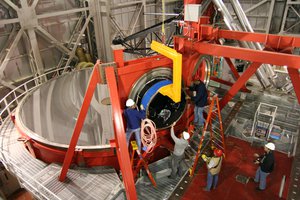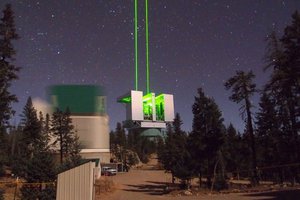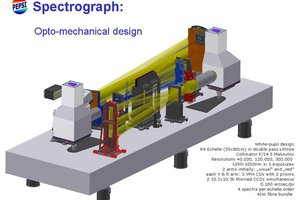Technical projects of the AIP for the LBT
As a partner in the LBT project the AIP is heavily involved in the development and construction of scientific instruments and facilities for the telescope.

The first AGW unit (#3) is mounted at LBT.
Credit: AIPThe so called Acquisition, Guiding and Wavefront sensor units (AGW-units) have been developed and built by the AIP. As the name suggests these units allow the telescope to localize the science field in the sky (acquisition) and to make the telescope closely follow the movements of the targets in the sky (guiding) while keeping the telescope optics optimally aligned (wavefront sensing). Four of these units have been built, two are foreseen to support the use of the LUCIFER instruments and two for the PEPSI polarimeters. The optical system as well as the detectors developed for the AGW-units are also part of the Permanent Fiber Units (PFU)'s for PEPSI.

ARGOS in use at the Large Binocular Telescope (LBT)
The ARGOS project provides a laser guide star facility for the telescope. ARGOS allows the telescope to be used in the so-called adaptive optics mode across much of the sky thus enabling the routine use of this mode for any scientific target and not just for targets which happen to sit next to a bright star. ARGOS is a joint project of many of the LBT partner institutes. The AIP has developed and built the natural guide star sensor for this system.

Drawing of the PEPSI optical bench.
Credit: AIPThe AIP developed a large scientific instrument, the fiber-fed, bench mounted, very high spectral resolution spectrograph PEPSI. It provides a unique polarimetric mode as well as spectral resolution of up to 300.000 in the optical wavelength range.